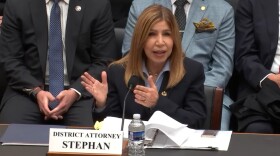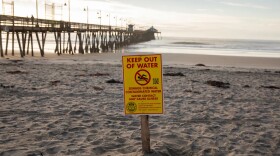California sold out of the first pollution permits issued as part of a landmark offensive against greenhouse gases at an inaugural auction that regulators said Monday went smoothly.
The effort to curtail carbon emissions involved the sale of 23.1 million permits - each allowing for the release of one ton of carbon - for $10.09 apiece, the California Air Resources Board said.
The permit sales last week opened the largest carbon marketplace in the nation and the second-biggest in the world after the European Union. The California air board will hold four such auctions a year.
"By putting a price on carbon, we know we are beginning the process of breaking our dependence on fossil fuels," Mary Nichols, board chairman, said during a conference call with reporters.
The board would not divulge specific figures on how many permits were bought by individual polluters covered under newly instituted caps on carbon emissions. The board does not comment on bidding activity to protect each polluter's strategy regarding use of the carbon market, Nichols said.
However, a sampling of the more than 300 companies that are covered include utilities such as Pacific Gas & Electric Co., petroleum refiners such as Phillips 66 Co. and even food processing companies such as Saputo Cheese USA Inc.
Blair Jones, a spokesman for Pacific Gas & Electric, said the company is "satisfied with the process based on what we've observed." He said he couldn't comment on whether PG&E participated in the auction due to restrictions in the cap and trade regulations.
The board said participation in the auction was robust, with three times more bids submitted than allowances available for sale.
Robert Day, a partner at Boston-based clean tech investment firm Black Coral Capital, said the high number of bids showed that California's carbon market is legitimate.
"As an investor, I take a lot of comfort that this was for real, was done right and will continue into the future," Day said
The permits are part of California's so-called "cap-and-trade" program - a central piece of the state's 2006 global warming regulations seeking to dramatically reduce emissions of heat-trapping gases.
Businesses are required to either cut emissions to cap levels annually, or buy pollution permits called "allowances" from other companies for each extra ton of emissions discharged annually.
The cap and number of allowances will decline over time in an effort to reduce greenhouse gas emissions year-by-year.
The final price for 2013 allowances was just nine cents above the $10 minimum price set by regulators.
"The fact that the prices are clearing a little above the reserve is a good sign that people's fears about out of control costs for cleanup are not justified by the way the market actually worked," Nichols said.
About 97 percent of the allowances were bought by companies regulated under the program, and another 3 percent were bought by financial traders for later sale.
Nearly 40 million permits for 2015 - a year when cap-and-trade widens to include more entities - were made available in the first auction. About 5.5 million of those allowances were auctioned for $10 each.
Petroleum refiners, manufacturing companies and other industries have been outspoken opponents of the program, calling it an illegal tax that will hurt California's economic recovery.
The California Chamber of Commerce has filed a lawsuit seeking to invalidate the program, arguing the board does not have the legal authority to collect money for the state.
"Instead of hiring workers, expanding production, or investing in new carbon-reducing equipment, these auction dollars will be distributed by government for other purposes," said Shelly Sullivan of the AB32 Implementation Group, a business coalition that supports greenhouse gas reductions but opposes the auctioning of allowances.
Some of the money collected by the state between now and 2020 is earmarked for residential utility ratepayers and small businesses to help offset an expected rise in their bills due to cap and trade. Other portions of the funds will go to energy efficiency and other projects in low-income neighborhoods.




